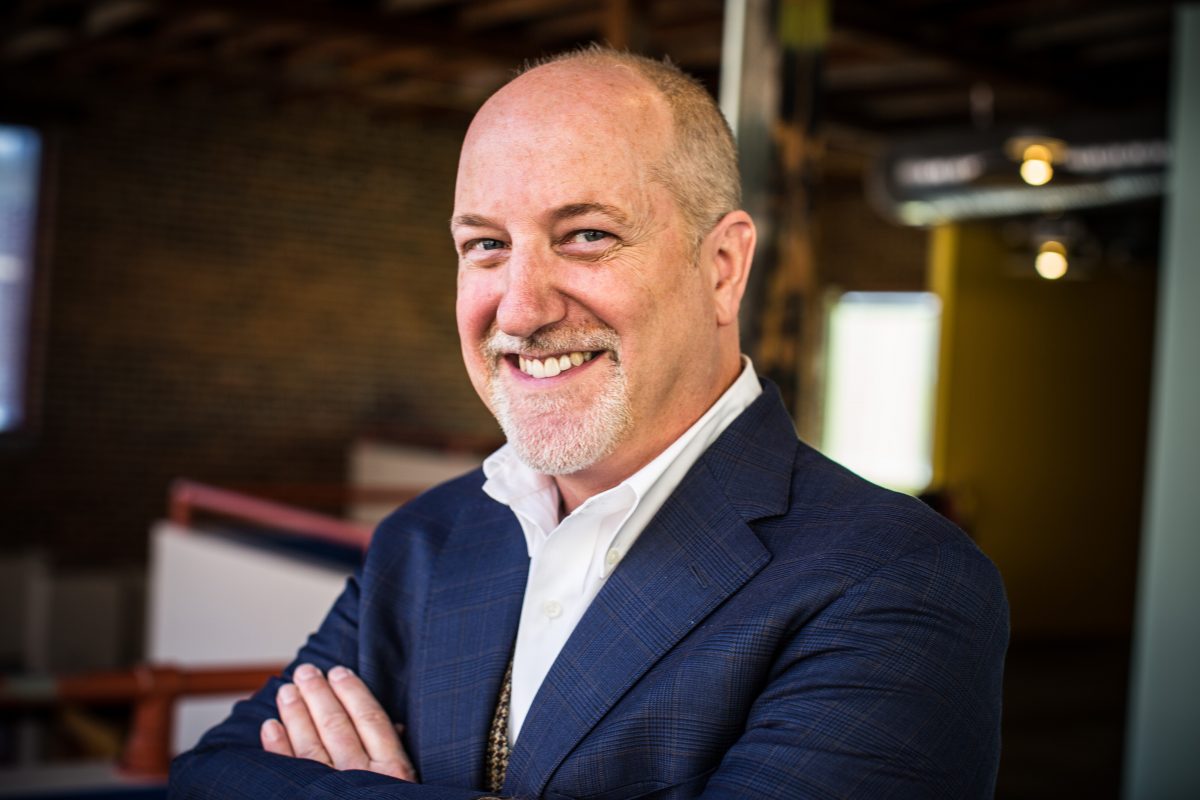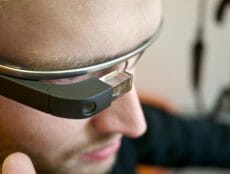
Articles
Editor’s Picks
Industry News
Interviews
Learning Alliance and Regatta VR CEO Bill West Discusses Emerging Corporate Training Solutions and His 30-Year Career in EdTech
By Henry Kronk
April 25, 2019
Bill West has been involved in edtech for over 30 years. After graduating with a computer science degree from Indiana University Bloomington in 1987, he went to work for Andersen Consulting on an initiative that was described at the time as CBT, or computer-based training. Since, West has worked for the dot-com-era UNext, Xerox, LEO Learning, and eLearning Brothers. He has also launched and sold his own custom corporate training design company, Option Six. Later, he founded the Learning Alliance, a team comprised of five corporate training design and development companies. Their collective C-suite includes numerous pioneers of education technology, from developers of PLATO and Atari to people who helped write the SCORM and xAPI protocols. West’s latest venture, Regatta VR, creates VR-based corporate training initiatives. To learn more, eLearning Inside recently reached West on the phone.
Henry Kronk: I don’t want to go over your whole history in education technology and corporate training because it would take up all of our time. But to begin, could you tell me how you started going down that path in the first place?
Bill West: It’s a funny story. My timing was really good. As part of my degree, I had two corporate internships with IBM. Part of what I did was teach courses on their 4th generation computing languages. I really enjoyed that.
When I graduated, I went to work for Arthur Anderson. They were forming a new organization called Education Consulting, which eventually became Change Management Services. Computer-based training (CBT) was something they were all getting in to. The PC had just come out. All of a sudden, the capability of creating CBT programs without a mainframe was there. I was surrounded by all these instructional designers, and I was the only one who really knew what the C stood for in CBT. They were all in the T area.
They came to me and said, ‘Have you ever done any CBT?’ I said, ‘Well, I think I have’ because of my time at IBM. But really, I had no idea what CBT was at the time. But my timing was good, I fit in well with the team, and we wound up winning our first international award back in 1989. After that, I got passed from one CBT project to the next. During the dot-com era, once again, I got really lucky and came across the right deal in eLearning.
Surviving the Dot-Com Crash
HK: And you also founded a company right after the Dotcom crash? What’s the story there?
BW: The company’s name was Option Six. I was in Bloomington, Ind. I had been assigned here for a previous job. This company out of Chicago, UNext, was building an online MBA program. It was supposed to be the Ivy League MBA. They had Stanford, Columbia, Carnegie Mellon—several schools at the top of their fields involved. They would contribute their faculty and UNext would build out the curriculum. The course development operations were taking place in Bloomington. I happened to be in Bloomington at the time, and the partner I worked for at Anderson back in ’88 was the VP of development at UNext. We literally crossed paths and two days later, I had an offer. I led the course production facility here. It was great. For 18 months, we were all on a high. It was the dotcom high. We all had huge budgets, everyone was looking at stock options. The courses we created were amazing. But as we all know, the market collapsed. Unnex, which was really poised to go public, went from 300 people to 25 people overnight.
I then looked in the faces of the 40 people at my facility here in Bloomington and said, ‘We’ve got a couple of different options in front us,’ most of which meant we just go on our merry way. But the sixth option is we band together and try to form something based on what we’ve all learned and build a company. And so, Option Six was formed. Nine years later, it grew from my $100,000 mortgage on my house to a $6 million business that I was able to sell to a public company.
HK: So let’s fast forward more or less to the present. How did the Learning Alliance form?
BW: The [idea behind the] creation of The Learning Alliance was to band people who were the absolute experts in their field together in a strategic way. This involved CEOs getting together on a regular basis, everyone using consistent revenue-generating models (much more than just a referral agreement or partnership). Then as the big deals come up, we all join together and we contribute to the proposal as one entity. That gives the client a single entity that they can consider and deal with. And it worked. We won a massive 4-year agreement with one of the world’s largest banks. We’ve done an extremely good job because the individual companies bring capabilities that are really strong. One of the companies is a gaming company. Another is a high-tech programming company. They all bring expertise that I can leverage at the same time. If I need 50 people for a big project, I can get them quickly.
It’s a real advantage. When somebody shows up and says, ‘Hey can you tell me more about games?’ Or design thinking, or anything of that nature, I can reach into the Alliance and pull an expert. I can pull a guy who used to work for Atari to talk about games. I can pull the people who wrote the SCORM and xAPI protocols to talk about design thinking and such. When the client needs something, we’re able to help them think in the future. And we have done that with our exploration into VR.

The Learning Alliance and Regatta VR Emerge in the Corporate Training Sector
HK: That brings us to the present. Regatta VR has been an Alliance member since it launched in December 2018. But I understand it is now spinning off into a separate entity. Why are you making this move right now?
BW: The Learning Alliance deals with the larger companies and the larger accounts. There are certain people who are focused on certain accounts. And it’s managed in a certain way as a result. Managing an account is much different from how a boutique might approach managing a portfolio of projects. As the Alliance gains additional clients, those clients will be larger, consistent, multi-year accounts. They will follow that business model.
The concentration on VR is different. It’s an emerging technology, it’s vastly growing. [Business is going to be] multiple clients with a few projects at the time. It needs to have a different type of P&L, it needs to have a different leadership structure, and it can’t become too encumbered with the ebbs and flows that might occur with the Alliance.
We made a decision to run it as a separate business. It has its own staff—certain professionals that it needs that the Alliance doesn’t need, such as 3D modelers and Unity programmers and such. I still oversee the whole thing. Several of our instructional designers would work on projects either for the Alliance or for Regatta depending on need. And Regatta would then be able to either succeed or fail, but independently from what we’re doing at the Alliance.
HK: In other words, most of the VR work is happening at the boutique level, at a smaller scale than the Learning Alliance’s large clients?
BW: Yes, it’s going to be smaller projects. Maybe an insurance company comes to us and what they’re looking for is a virtual facility where the claims adjusters can come in, examine a car, and make decisions from there. Even though it’s a global company, that’s just a single demand, a single project. In that regard, Regatta feels like a boutique.
However, the thing I’ve been writing mostly about technology and about VR is that it’s not just another technology for training like video or flash was. It’s a new technology completely. The hurdles you have to go through to make sure it’s secure, that IT buys off, that you figure out how to provide all the headsets, that you can keep the devices managed, that you can train all the people—it’s really complex. What the Alliance is allowing me to do is to take all those lessons we have learned about how large organizations and enterprises adopt new technology, and leverage that for Regatta. For example, within the Alliance, we have services. So basically, help desk, answering phones, hosting LMSs and all those things you would expect. When we roll out VR at a large organization and they have several thousand headsets out there, those people with the headsets need support. They need people to call, they need support instruments in place. The group in the Alliance that have been doing that forever can be leveraged to create programs that Regatta can use for their clients.
For example, the guys who wrote the SCORM and xAPI protocols at the Alliance have been leveraged to make sure that, not only is the data collected in the VR headset capable of coming into an LRS and an LMS, but there’s a lot of other really cool data that we can track within the headset. So they’re writing a custom framework for us that will allow us to pull the data out of the headset and convert it into unique xAPI calls that can then be plugged into the LRS.
HK: It sounds like you get to have your cake and eat it too.
BW: We kind of got lucky. VR came out of nowhere. We always knew it was there, we were always interested in it. But maybe it was the VIVE Focus when it came out—it’s enterprise-ready, it’s wireless. All of a sudden, I thought, ‘Wait a minute, all of the encumbrances that we used to have are free.’ And then we looked at the market and we kept getting calls about VR. There are no providers out there. There are a lot of 360º video guys out there. Really good guys. If you want a documentary on the Grand Canyon or a museum tour, there are some really good guys out there. But in terms of real interactive training using this technology, there just wasn’t much. So we saw a massive business opportunity to take everything we’ve learned over the past 20 years and create something special.
HK: On the demand side—on the client side—it seems to me like there is an appetite for some really big contracts. KFC has their escape room fry cook training. Wal-Mart has a really big VR training component, so does McDonald’s. And at the other end of things, there are clients like the insurance company you described. Do you think demand will fill in between these poles?
BW: That’s a good question. I think the demand will fill in when the supply is there. The projects we’re putting together right now are upwards of $300,000 a piece. Not everyone has that. What we are challenging ourselves to do is see if we can take what we create at that upper price-point and enable us to put together medium-size and smaller-size solutions.
We’re forming agreements with at least two authoring tool companies that I really like. They will allow us to do things that we used to only be able to do custom in Unity faster, which will reduce the price. Because we’re at the university here, we have access to some really amazing resources for video production at a fraction of the rate you would get for commercial.
So I think your mid-sized company that wants to do a couple VR programs will have a fighting chance of doing so once the suppliers and the solutions in that mid-range are available.
The Future of VR in Corporate Training and Regatta VR
HK: From what I understand from your site, Regatta deals mostly in VR training programs that teach soft skills. These include topics of focus like sexual harassment and bullying. Do you expect this to remain the general area of training Regatta designs going forward?
BW: We will be doing work on the other end of the spectrum. I mentioned the car for the insurance agency. The architectural, engineering, construction (AEC) industry, is very interested. That’s all the hard skills and safety and those kinds of things. We’re not going to say no to that kind of work because it allows us to really flex our muscles and practice some new techniques.
I do think that we’ve found a sweet spot for ourselves. Our pedigree has always been that we’ve been able to find a way to take these really complicated soft skills and find a way to effectively teach them online. The VR headset is allowing me to integrate some incredibly exciting and sophisticated techniques as a result of all that immersion aspect. I think it will be a strong area because it fits. The sexual harassment, diversity, anti-bullying, those are the ones that are natural fits for us. Those will be the first real packaged courses that we will put on the market.
But then I want to drive it deeper. There are some real key areas where empathy matters and where you’re able to either teach the individual and make a difference for them or teach their families and make a difference for the individual. We outline a few of these on our website, but PTSD, Alzheimer’s, these are areas where I really think we’ll be able to push this technology to a level where we might actually be able to make a difference in peoples’ lives. Building the empathy program and the anti-bullying and those things are giving us steps towards our ability to do that, and I think that’s one of the more noble aspects of our mission.
Featured Image: Stephan Sorkin, Unsplash.









No Comments